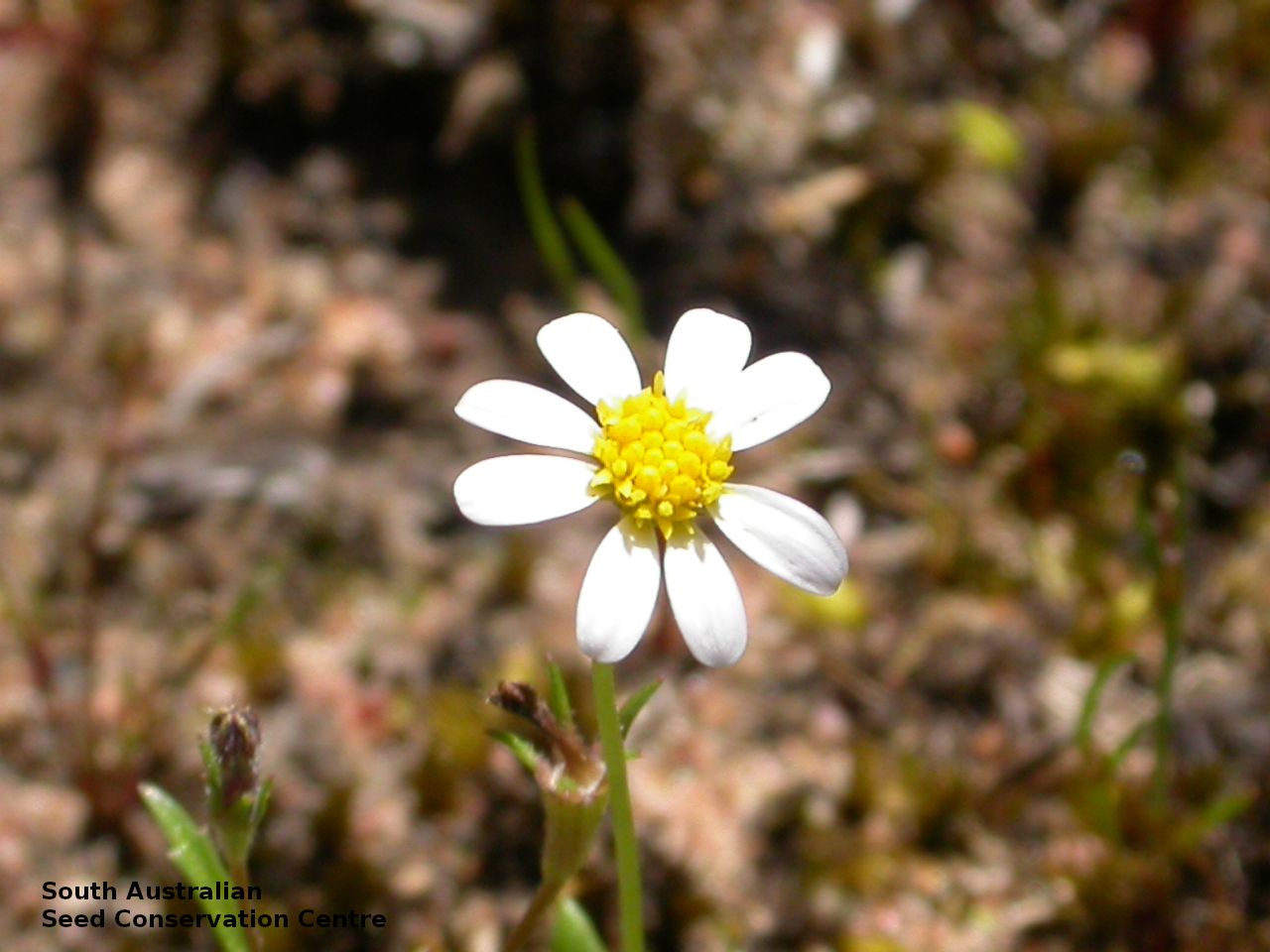














Botanical art
Prior names
Brachycome readeri
Common names
Southern Daisy
Reader's Daisy
Etymology
Brachyscome from the Greek 'brachys' meaning short and 'kome' meaning hair, referring to the tuft of short bristles or hairs of the pappus. Readeri named after Felix Maximilian Reader (1850-1911), a German-born Australian chemist, naturalist and botanical collector.
Distribution and status
Found only in the lower South-east in South Australia, growing in seasonally wet ground on margins of swamp. Also found in New South Wales and Victoria. Native. Very rare in South Australia. Rare in Victoria. Uncommon in New South Wales.
Herbarium region: South Eastern
AVH map: SA distribution map (external link)
Plant description
Annual herb to 13 cm high with erect to ascending, weak, sparsely hairy stems. Basal leaves linear or narrowly oblanceolate, entire or l-3-toothed, to 7.5 cm long, hairless. Other leaves linear or lobed with 3-5 linear acute segments, to 6 cm long, hairless. Flowers white appearing between August and October. Fruits are brown daisy-heads. Seeds are orange to dark-brown, cone-shaped seed to 1.5 mm and 1 mm, with striation down the length of the seed and covered with scattered wrinkles. Seed embryo type is spatulate fully developed.
Seed collection and propagation
Collect seeds between October and December. Pick heads that are maturing, drying off, with brown seeds that dislodge easily. Place the seed-heads in a tray and leave to dry for a week. Then gently rub the heads by hand to dislodge the seeds. Use a sieve to separate the unwanted material. Store the seeds with a desiccant such as dried silica beads or dry rice, in an air tight container in a cool and dry place. This species may have physiological dormancy that need to be overcome for the seed to germinate.
| Location | No. of seeds (weight grams) | Number of plants | Date collected | Collection number Collection location | Date stored | % Viability | Storage temperature |
|---|---|---|---|---|---|---|---|
| BGA MSB | 820 (0.16 g) 1,000 (0.2 g) | 22-Nov-2007 | PJA158 South Eastern | 1-Jan-2012 | 70% | -18°C | |
| BGA | 900 (0.19 g) | 14-Nov-2008 | PJA184 South Eastern | 1-Jan-2012 | 95% | -18°C |
Number of plants: This is the number of plants from which the seeds were collected.
Collection location: The Herbarium of South Australia's region name.
% Viability: Percentage of filled healthy seeds determined by a cut test or x-ray.